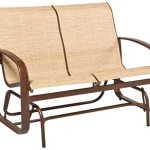Removing Cigarette Smoke Odor From Wooden Furniture
Cigarette smoke permeates everything it touches, and wooden furniture, due to its porous nature, is particularly susceptible to absorbing and retaining the unpleasant odor. This can be a significant issue for individuals purchasing used furniture, inheriting pieces from smokers, or simply dealing with lingering smells after smoking has occurred indoors. Effectively removing this odor requires a multi-faceted approach, combining cleaning, deodorizing, and potentially refinishing, depending on the severity of the contamination and the type of wood involved.
The persistence of cigarette smoke odor results from the complex chemical composition of the smoke itself. Tar, nicotine, and various other particulate matter settle onto surfaces, embedding themselves into the wood's grain and finish. These compounds then gradually release over time, creating a persistent and often offensive smell. Furthermore, the oily nature of many of these substances makes them resistant to simple cleaning methods, necessitating more specialized techniques.
The type of wood and its finish will also influence the approach used. Finishes range from simple waxes and oils to varnishes, lacquers, and polyurethane coatings. Each reacts differently to cleaning agents and deodorizers. Solid wood will react differently than veneer or engineered wood products. Careful consideration of these factors is critical to avoid damaging the furniture during the cleaning process.
Initial Assessment and Preparation
Before commencing any cleaning procedure, a thorough assessment of the furniture is essential. This involves identifying the type of wood, the type of finish, and the extent of the odor penetration. A visual inspection can reveal areas of heavy staining or discoloration, indicating a higher concentration of residue. A smell test, conducted in a well-ventilated area, will provide a sense of the severity of the odor. This information will guide the selection of appropriate cleaning and deodorizing agents and techniques.
Preparation is equally important. The furniture should be moved to a well-ventilated area, preferably outdoors, if feasible. Direct sunlight should be avoided, as it can damage the finish. Protect the surrounding area with drop cloths or plastic sheeting. Gather all necessary cleaning supplies and equipment. This includes microfiber cloths, soft-bristled brushes, cleaning solutions, deodorizers, and appropriate safety gear, such as gloves and a mask.
Dusting the furniture thoroughly is the first practical step in the cleaning process. A vacuum cleaner with a brush attachment can be used to remove loose dust and debris from crevices and corners. Pay particular attention to areas where smoke residue is likely to accumulate, such as around drawers, hinges, and decorative elements. A tack cloth can be used after vacuuming to pick up any remaining dust particles. Removing loose debris ensures that the cleaning solution can effectively penetrate the surface and target the embedded odor molecules.
Surface Cleaning Techniques
The following cleaning methods are commonly used to remove cigarette smoke odor from furniture. The appropriate method will depend on the finish of the wood, the odor intensity, and the prior assessment of the furniture.
Mild Soap and Water: This is the gentlest method and suitable for furniture with a delicate finish. Mix a small amount of mild dish soap (such as Castile soap) with warm water. Dampen a microfiber cloth with the solution, wringing out excess water to prevent oversaturation. Gently wipe the surface of the furniture, working in the direction of the wood grain. Rinse the cloth frequently in clean water and continue wiping until all surfaces have been cleaned. Dry the furniture thoroughly with a clean, dry microfiber cloth. Avoid abrasive cleaners or scrubbing pads, as they can damage the finish.
Vinegar Solution: Vinegar is a natural deodorizer and can be effective in neutralizing cigarette smoke odor. Mix equal parts white vinegar and warm water. Apply the solution to the furniture using a damp microfiber cloth, as with the soap and water method. The vinegar smell will dissipate as it dries, leaving behind a fresher scent. Vinegar is mildly acidic, so it is important to test it on an inconspicuous area first to ensure it does not damage the finish. Avoid using vinegar on waxed finishes, as it can strip the wax.
Baking Soda Paste: Baking soda is another natural deodorizer and can be used to absorb odors from porous surfaces. Create a paste by mixing baking soda with a small amount of water. Apply the paste to the affected areas of the furniture and allow it to sit for several hours, or even overnight. The baking soda will absorb the odor molecules. Once the paste has dried, vacuum it up using a brush attachment. This method is particularly effective for removing odors from upholstered furniture cushions that have wooden supports inside.
Commercial Wood Cleaners: Numerous commercial wood cleaners are specifically formulated to remove odors and stains from wood furniture. When selecting a commercial cleaner, choose one that is appropriate for the type of finish on the furniture. Always read and follow the manufacturer's instructions carefully. Test the cleaner on an inconspicuous area first to ensure it does not damage the finish. Apply the cleaner using a microfiber cloth, working in the direction of the wood grain. Wipe away any excess cleaner with a clean, dry cloth.
Deodorizing Agents and Techniques
In addition to surface cleaning, several deodorizing agents and techniques can be employed to further reduce or eliminate cigarette smoke odor from wooden furniture.
Ozone Generators: Ozone generators produce ozone gas, which is a powerful oxidizing agent that can neutralize odors. Ozone generators should be used with caution, as high concentrations of ozone can be harmful to humans and pets. When using an ozone generator, ensure that the room is unoccupied and well-sealed. Follow the manufacturer's instructions carefully, and ventilate the room thoroughly after treatment. Ozone generators are a more aggressive approach and are better suited for more severe cases of smoke odor. They are often used in professional cleaning services.
Activated Charcoal: Activated charcoal is a highly porous material that can absorb odors from the air. Place bowls of activated charcoal around the furniture or inside drawers to absorb the lingering smoke odor. Replace the charcoal regularly, as it becomes saturated over time. Activated charcoal is a passive method, working slowly to absorb odors without requiring any direct application to the furniture.
Air Purifiers: Air purifiers with HEPA filters can remove airborne particles, including smoke residue, from the air. While they will not directly clean the furniture, they can help to reduce the overall level of odor in the room. HEPA filters capture particulates that contribute to the smell, creating a cleaner environment around the furniture.
Fabric Softener Sheets: Placing fabric softener sheets in drawers and cabinets can help to mask the smoke odor and impart a fresh scent. Ensure the sheets do not directly contact unfinished wood surfaces as the oils in the sheets can stain. This is a temporary solution and does not remove the source of the odor, but it can provide immediate relief.
Addressing Stubborn Odors and Refinishing
In cases where the cigarette smoke odor is deeply embedded in the wood, more aggressive measures may be necessary. This can include stripping the old finish and refinishing the furniture.
Stripping the Finish: Removing the existing finish allows for a deeper cleaning of the wood. This can be done using chemical strippers or sanding. Chemical strippers are effective at removing multiple layers of finish, but they can be harsh and require proper ventilation and safety precautions. Sanding is a more labor-intensive method, but it allows for greater control over the amount of material removed. Start with a coarse grit sandpaper and gradually progress to finer grits to achieve a smooth surface.
Sealing the Wood: After stripping the finish, the wood should be sealed to prevent further odor absorption. A polyurethane sealer is a good option, as it creates a durable and water-resistant barrier. Apply the sealer in thin, even coats, following the manufacturer's instructions. Allow the sealer to dry completely before applying a new finish.
Refinishing: Once the sealer has dried, the furniture can be refinished with a new coat of paint, stain, or varnish. Choose a finish that is appropriate for the type of wood and the desired aesthetic. Apply the finish in thin, even coats, following the manufacturer's instructions. Allow the finish to dry completely before using the furniture.
Refinishing is a significant undertaking and should only be considered when other methods have failed. It is important to have the necessary skills and equipment, or to consult with a professional furniture restorer.
By systematically employing these cleaning, deodorizing, and, if necessary, refinishing techniques, it is possible to effectively remove cigarette smoke odor from wooden furniture and restore its original beauty and freshness. The key is to correctly assess the situation, choose the appropriate methods, and exercise patience and diligence throughout the process.

The Best Way To Get Smoky Smells Off Of Wood Furniture Jennifer Rizzo

How To Remove Cigarette Smoke Smell From Wood Furniture

Get The Smell Of Cigarette Smoke Out Wooden Furniture

The Best Way To Get Smoky Smells Off Of Wood Furniture Jennifer Rizzo

How To Get A Musty Smell Out Of Furniture Once For All

How To Remove Stinky Smells From Wood Furniture
:max_bytes(150000):strip_icc()/101378481-57b298330c13412f88dfbb45a5ad7ab3.jpg?strip=all)
How Do I Eliminate Smoke Smell On Furniture

How To Remove Cigarette Smoke Smell From Timber Furniture Care Products

How To Get Cigarette Smoke Out Of Your Wood Furniture 12 Best Tips Q

How To Remove Stinky Smells From Wood Furniture








